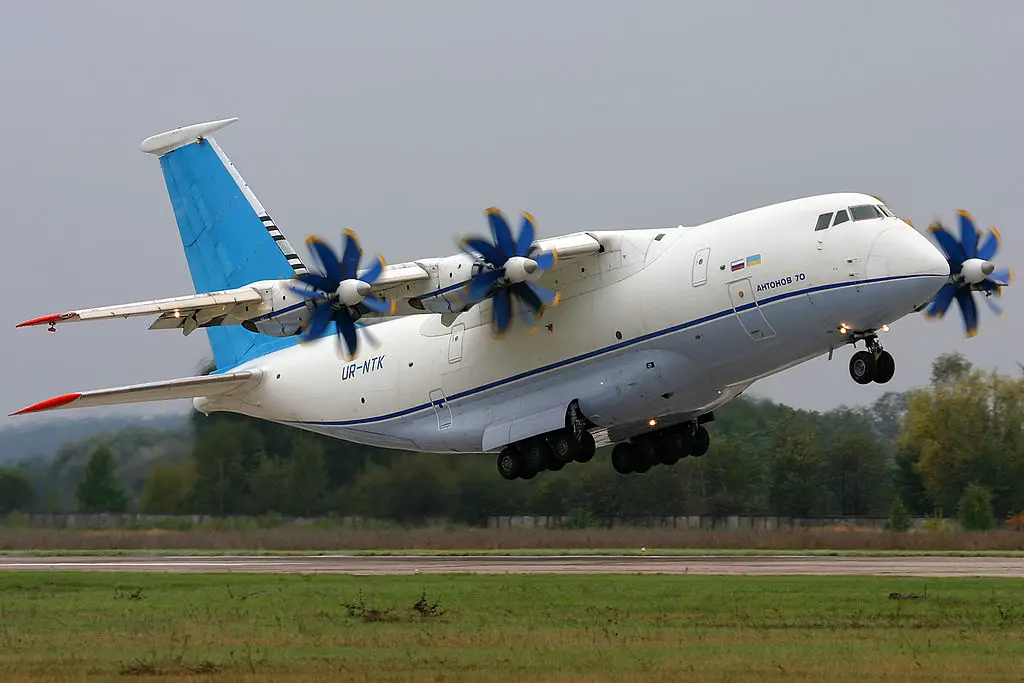The Antonov An-70 is a four-engine medium-range transport aircraft, and the first aircraft to take flight powered only by propfan engines. It was developed in the late 1980s by the Antonov Design Bureau to replace the obsolete An-12 military transport aircraft. The maiden flight of the first prototype took place in December 1994 in Kiev, now independent Ukraine. Within months the prototype had suffered a mid-air collision. A second airframe was produced to allow the flight-test programme to proceed. Both prototypes were produced by the Kiev Aircraft Production Plant.
Following the dissolution of the Soviet Union in the early 1990s, the programme became a joint development between Russia and Ukraine. The former compounded the issue of a reduced market with its intermittent commitment to the project. Repeated attempts to start production have had limited success. As a result of the Crimean crisis, the Ukrainian government, in April 2014, announced that it would halt all military-technical cooperation with Russia. In March 2015, Russia Defence Ministry declared that it is ruling out the An-70 for state procurement.Western European countries, including Germany, at one stage assessed the aircraft for procurement, but many later decided against it.

The An-70 is a monoplane with a high-mounted wing design that features four distinctive propfan engines. Designed by the Progress Design Bureau, each of the D-27 engines is rated at 13,800 shp (which can be uprated to 16,000 shp), which is used to drive the SV-27 contra-rotating scimitar propellers designed by Aerosila; eight on the front propeller and six on the aft propeller. The propfan engines deliver slipstream to the supercritical wings that feature double-slotted trailing edges to provide high lift coefficients at low speeds. The aircraft’s cruise speed is 750 km/h (405 kt) at an operational altitude of 8,600 to 9,600 m (28,200 to 31,500 ft).
Similar to the An-124, the An-70 design makes extensive use of titanium and composites to keep weight to a minimum and increase damage resistance. Approximately 25 percent of the airframe is made of carbon-fibre composites, which are primarily used on control surfaces and the tail assembly, while aluminium and steel alloys are used for the rest of the structure. The An-70 has a designed life of 45,000 hours over 15,000 flights. The prototypes had a fly-by-wire flight-control system that comprised three digital channels and six analog channels; it was expected that production aircraft would have a four-channel digital fly-by-wire system. Aircraft and system information are mainly relayed to the pilot and co-pilot via six large multi-function CRT displays, with secondary electro-mechanical instruments and head-up displays; a flight engineer position is also present on the prototypes.
















